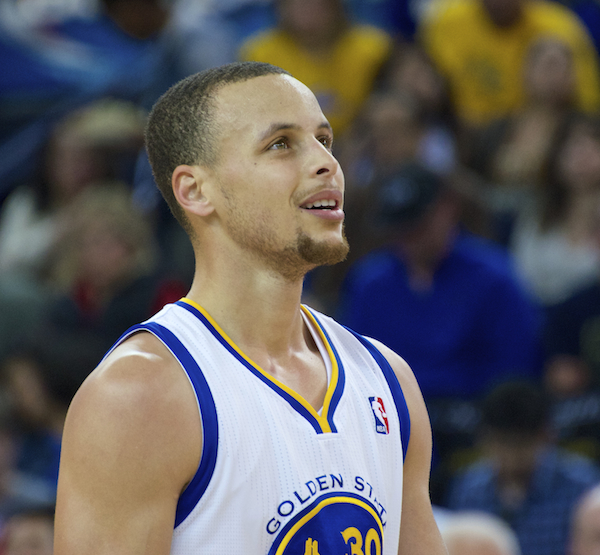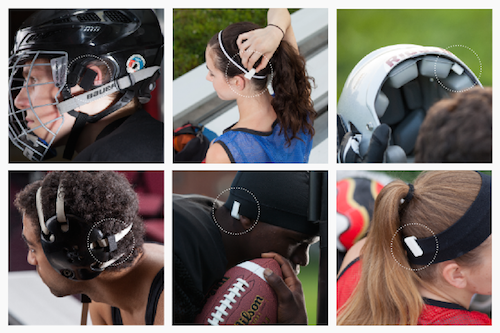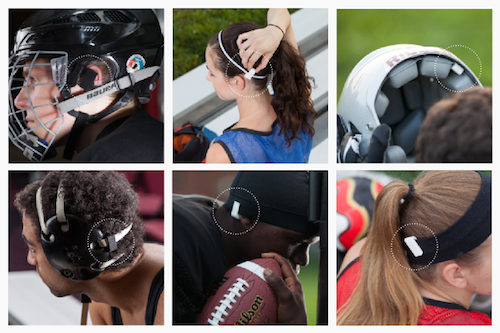The sports world is supposed to have made progress on understanding and dealing with brain injuries and concussions. Leagues have implemented concussion protocols that mandate specific forms of testing for brain injuries before players are allowed back into play. Coaches understand that when it comes to concussions, they can’t put pressure on doctors or players to speed things up. Even players, long the most resistant population to taking brain injuries seriously, are starting to understand that a brain injury should not be played through. I think the sports world really has made progress… and then something mind-numbingly stupid happens and I wonder if we’ve made any progress at all.
Last night, the Golden State Warriors qualified for the NBA Finals last night by beating the Houston Rockets 104-90 in Game Five of the Western Conference Championships. They won the series with relative ease, four games to one but they didn’t get through unscathed. In each of their last two games, one of their best players was forced to leave the game with a head injury. In Game Four, it was league Most Valuable Player, Steph Curry. In Game Five, it was his backcourt mate, Klay Thompson. Their injuries, and the way they were handled by team physicians, make me think that despite all of the progress the sports world has made on the concussion issue, we still don’t have even a basic understanding of what a concussion-causing injury looks like. Gah! Let’s break this down.
Steph Curry was injured when he was fooled on defense by a clever fake from Trevor Ariza. Ariza was ahead of Curry but knew that if he moved to lay the ball into the hoop, he’d be at danger of having his shot blocked by the athletic Curry. So, he faked as if he was about to shoot the ball but kept his feet on the ground. Curry fell for the fake and leapt into the air. Unfortunately, this meant that instead of meeting Ariza in midair, Curry’s jump took him up and almost over a grounded Ariza. As he passed the peak of his jump and started coming back down, his momentum and Ariza’s body acted as a pivot, twisting Curry backwards so that he hit the ground upside-down and head first.
It’s a bad fall, to be sure, but despite Curry’s head hitting the floor, it’s not one that screams concussion. Why? First, Curry knows what’s happening. He can’t stop himself from hitting the ground, but he’s aware that he’s falling. It may not seem like there’s time to do a lot in midair but remember that basketball players are world-class athletes who are used to making decisions and acting on them during a jump. Curry is remarkable even in the NBA population. He knows he’s falling, knows which way he’s going to land. He has time to brace himself for the fall, and he does it extremely well. He takes a tiny bit of the fall on his hand, arm, and wrist, but not enough to break any bones. That’s smart. He also rolls as much as possible, continuing the motion of the tumble so take pressure off his neck. Although we can’t see it, he surely tensed up his neck and shoulder muscles to support his head as he falls. Perhaps the most important thing is that his head doesn’t twist or rotate relative to his body as he hits the ground.
Curry was helped off the court a few minutes after this play. He went to his team’s locker room where he was monitored and tested for a concussion based on the NBA’s concussion protocol. After passing the tests, he returned to the game and has had no concussions symptoms since then. Watch the fall a few more times. It’s a good fall.
Now compare that to Klay Thompson’s injury from Game Five. This time, the injured player was playing offense. He was in the act of making a shot fake — just like the one that Trevor Ariza made when he unintentionally became part of Curry’s injury. Thompson lifts the ball as if he’s going to shoot it and as intended, he tricks an opponent (coincidentally ALSO Trevor Ariza) into trying to block the shot. Ariza takes a running leap from the side to get his hand in front of the shot. Instead of jumping himself, Thompson stays on the ground. This puts him in the path of the leaping Ariza, who’s knee gives Thompson a glancing blow to the side of the head as he passes him.
It looks like nothing, or at least something much less dramatic than Curry’s fall, but it’s much more dangerous. Thompson does not see it coming. Oh, sure, he knows that a defender has been fooled by his fake and has “bit” enough to jump, but he doesn’t specifically know that a knee is about to hit him in the head. As such, he has no way of bracing for the impact. The impact, when it comes, twists his neck and head, as they rotate in response to the knee.
Thompson was taken to the locker room where he had a cut to his ear attended to. After getting stitched up, he returned to the bench and was reportedly cleared to play. In fact, a sideline reporter at the game reported that he hadn’t taken any concussion tests because he didn’t need them. After the game, Thompson complained of concussion symptoms — according to Jesus Gomez of SB Nation, Thompson couldn’t drive home and threw up. In the aftermath of the game, some uncertainty about what tests he was given and whether he passed them has either been revealed by more detailed reporting or (cynically speaking) was generated by the team in a CYA maneuver. Kevin Draper actually amended his Deadspin article on Thompson by writing that “the post has been updated to better express the uncertainty over exactly what tests Thompson did or did not undergo.”
I’m less concerned with a single incident than with what it reveals. Despite hundreds of thousands of words written about the topic, hundreds of millions of dollars spent in settlements with retired players, and hundreds of thousands of dollars paid annually to keep neurologists of staff, sports teams still don’t seem to understand what a dangerous head injury looks like. The mechanics of a concussion are simple: rotational force is more dangerous than a straight ahead blow. When an athlete sees a collision before it happens and has time to prepare himself, he is less likely to suffer a concussion. It would be better to play on the safe side and have treated both of these injuries as potential concussions but to go through the protocol for the less dangerous one and potentially skip it for the more dangerous one is difficult to understand or accept. It’s time for sports teams to learn what a concussion looks like.




